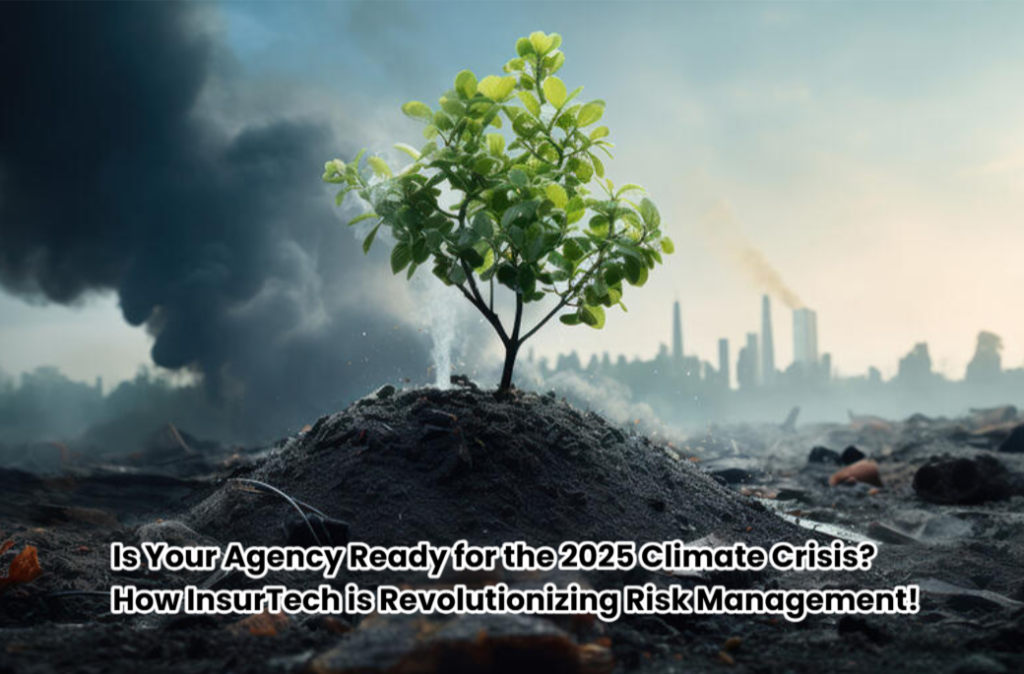Climate change is not a distant worry anymore. It is a real crisis that impacts economies, communities, and industries worldwide. Businesses, insurers, and governments face a big challenge. Adapting to the changing risk landscape can be tough. However, while the risks are real and substantial, so are the solutions. The key is to combine current strategies and technologies. This creates a complete plan that encourages resilience and adaptation.
When discussing solutions, two essential concepts often arise: climate resilience and climate adaptation. They are closely linked but serve different purposes. Knowing their differences is key for creating a strong response to climate risks. They are like two sides of a coin—both important, but they play different roles in protecting against climate disasters.

Climate Resilience vs. Climate Adaptation: What’s the Difference?
Climate resilience shows how well businesses, communities, and economies recover from climate shocks. These shocks include hurricanes, floods, wildfires, and rising sea levels. It means having strong response plans ready. This includes insurance options that offer financial help after disasters. Resilience helps people and organizations recover quickly during a crisis. It prevents lasting damage and supports a strong comeback.
On the other hand, climate adaptation is a proactive investment in future security. It means acting now to lessen the risks of climate damage before it happens. This way, businesses, governments, and individuals can keep going in a changing climate. Adaptation means better infrastructure, smart policies, and financial plans to reduce risk.
We can face climate challenges by blending resilience and adaptation. This way, we can ensure a future that responds to immediate threats and is ready for lasting sustainability. The crucial question is: are we ready to take the necessary steps to implement these solutions effectively?
The Reality of Climate Change: Escalating Threats and Economic Impacts
In recent years, climate change has shown its harsh effects. We’ve seen record-breaking natural disasters happen all over the world. Wildfires, hurricanes, and floods have hurt economies. They’ve displaced people and forced governments to search for resources. These disasters have put a lot of stress on traditional insurance. This has caused gaps in coverage, rising premiums, and instability in the market, especially in high-risk areas.
The Cost of Catastrophes
The financial toll of climate-related disasters is staggering. In 2019 alone:
- Climate disasters caused huge economic losses. Wildfires in Australia and the Amazon, heavy flooding in the U.S., and droughts in India resulted in $133 billion in damages. This information comes from a report by Swiss Re.
- Flooding alone accounted for $82 billion in damages, yet only $13 billion was insured (Aon Insurance).
Many climate-related financial losses are not insured. This leaves businesses, individuals, and governments struggling to pay the costs. Climate scientists predict more extreme weather in the future. So, insurance agencies need to change their risk assessment models. They must also adapt their policies to meet rising demands.
How Insurtech is Transforming the Insurance Industry
A game-changer in addressing climate risk is Insurtech—the fusion of insurance and technology. Insurtech uses AI, data analytics, blockchain, and IoT. This helps with risk assessment, speeds up claims processing, and boosts catastrophe modeling. Insurtech provides insurers with new ways to boost efficiency and resilience as climate risks grow more complex.
Key Benefits of Insurtech in Climate Risk Management
1. Enhanced Risk Assessment
Traditional risk assessment models can’t handle the growing unpredictability of climate disasters. Insurtech platforms integrate:
- Real-time climate data
- Satellite imagery and geospatial analytics
- Historical insurance claims and AI-driven predictions
Insurers can combine these data sources to create better risk models. This leads to improved decision-making and pricing strategies.
2. Improved Catastrophe Modeling
Insurtech solutions provide advanced tools for catastrophe modeling. They combine climate change forecasts, real-time weather updates, and AI-driven simulations. These technologies help insurers predict losses and prepare for various risks. This ensures they stay financially stable despite rising climate threats.
3. Predictive Analytics for Climate Trends
Advanced predictive analytics tools can predict climate trends. This helps insurers change their underwriting strategies. By analyzing patterns over years or even decades, insurers can:
- Anticipate shifts in high-risk areas
- Adapt policies to reflect emerging climate threats
- Adjust pricing structures to maintain profitability
4. Automated Claims Processing
Many Insurtech companies use automation and AI-powered chatbots to simplify claims management. Digital platforms allow policyholders to:
- File claims instantly
- Upload necessary documents through a mobile app
- Track their claim status in real time
This process cuts down on manual errors, speeds up settlement times, and improves the customer experience.
Steps for Businesses and Insurers to Adapt
The time to act is now. Climate change is changing the insurance industry. Companies need to act now to stay relevant and survive.
1. Invest in Climate-Focused Technology
- Assess current technological capabilities and identify gaps in climate risk management.
- Integrate Insurtech solutions that enhance data analytics, predictive modeling, and claims automation.
- Ensure seamless integration with existing systems to maximize efficiency and adaptability.
2. Develop a Comprehensive Data Strategy
- Establish a robust climate data collection and analysis framework.
- Partner with Insurtech providers and climate research organizations to access specialized datasets.
- Utilize AI-powered insights to refine risk assessment and underwriting strategies.
3. Train Staff and Foster a Culture of Innovation
- Provide ongoing training and workshops on emerging technologies.
- Encourage a culture of adaptability, ensuring that employees embrace digital transformation in insurance.
4. Educate Clients and Strengthen Customer Engagement
- Develop climate risk awareness programs for policyholders.
- Use digital platforms to boost transparency. This helps with communication about pricing decisions and risk strategies.
5. Build Strategic Partnerships
- Work with climate scientists, tech companies, and regulators to understand new risks better.
- Leverage partnerships to create innovative risk-transfer solutions and financial instruments.
Must read:
- 3 Game-Changing Strategies to Transform Insurance Customer Relationships Forever!
- Shocking Truth About Umbrella Insurance: Are You at Risk Without It?
- Exposed! The Top 10 Shocking Insurance Myths That Are Costing You Money!
FAQs on Climate Change, Insurance, and InsurTech Solutions
What is the difference between climate resilience and climate adaptation?
How does climate change impact the insurance industry?
What is InsurTech, and how does it help mitigate climate risks?
These technologies are:
Artificial intelligence
Machine learning
Big data
Blockchain
Internet of Things (IoT)
InsurTech solutions boost risk assessments. They also improve catastrophe modeling. Plus, they streamline claims management and create better climate risk forecasts.
How can predictive analytics help insurers manage climate change risks?
How does InsurTech improve the claims process for policyholders?
Final Thoughts: The Future of Insurance in a Changing Climate
The intersection of climate change and insurance presents both challenges and opportunities. Insurance agencies that use Insurtech and data-driven risk models will succeed in a changing risk landscape.
As we move toward 2025 and beyond, it is imperative that businesses and insurers take decisive steps to prepare for climate risks. Integrating new technologies will help secure finances. It will also protect communities and businesses during uncertain times.
